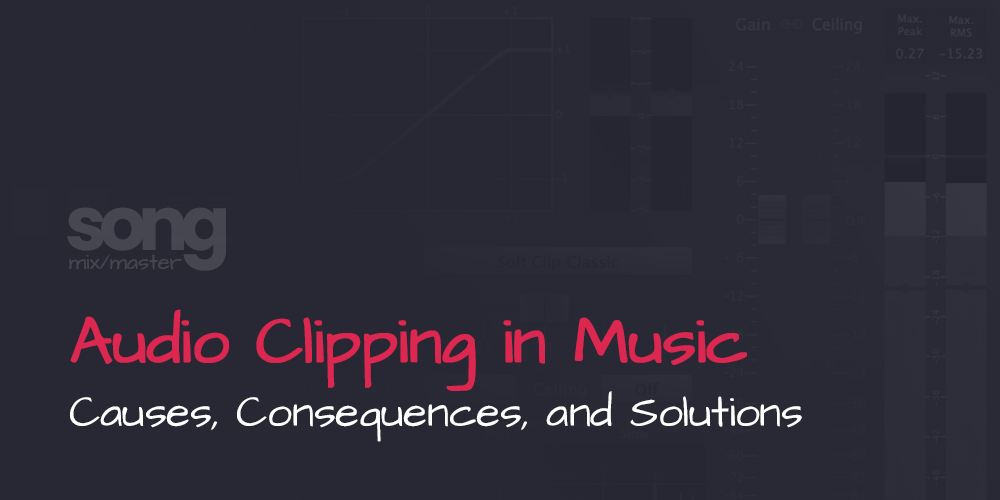Audio clipping is a phenomenon that plagues musicians, audio engineers, and producers alike. Understanding what audio clipping is, why it’s detrimental in music mixing, and how to avoid it is crucial for maintaining audio fidelity and producing professional-quality music.
In this comprehensive article, we will delve into the intricacies of audio clipping, providing a profound insight into its causes and offering practical solutions to circumvent this audio nuisance.
What is Audio Clipping and How to Avoid It?
Defining Audio Clipping
Audio clipping occurs when the amplitude of an audio signal exceeds the maximum level that can be faithfully reproduced. In digital audio, this limit is represented by 0 dBFS (decibels relative to full scale). When a signal exceeds this threshold, it gets “clipped” or truncated, resulting in distorted, harsh, and, often, unpleasant sounds.
Avoiding Audio Clipping
- Set Proper Gain Levels: Ensure that the input levels on your recording device or digital audio workstation (DAW) are properly set. Aim to record with an average level that leaves headroom, preventing the signal from reaching 0 dBFS.
- Use a Limiter: Incorporate a Limiter plugin into your signal chain to prevent peaks from surpassing 0 dBFS. A limiter will subtly reduce the gain of excessively loud transients.
- Monitor the Signal: Pay close attention to your signal meters while recording or mixing. Keep an eye on peak levels to avoid unintentional clipping.
- Use High-Quality Gear: Invest in quality audio interfaces, microphones, and preamps. Inferior equipment can introduce unwanted noise and increase the risk of clipping.
What is Clipping in Music and Recording?
Clipping in music and recording is the result of audio signals exceeding their maximum allowable levels. It manifests as distortion, often described as a harsh, grating sound. While some musicians and producers may intentionally use clipping for creative effect, it’s essential to distinguish between creative distortion and unintentional clipping to ensure the highest audio quality in your music.
Why Audio Clipping Is Dangerous in Music Mixing
Audio clipping poses several dangers in music mixing, making it a nemesis for sound engineers and musicians alike:
- Loss of Dynamic Range: Clipping reduces the dynamic range of a recording, resulting in less contrast between soft and loud sounds. This can lead to a flat, lifeless mix.
- Unpleasant Distortion: Clipping-induced distortion is generally undesirable in music production, as it compromises audio quality and can be perceived as a defect by listeners.
- Incompatibility: Clipped audio may not meet the technical standards required for certain platforms, such as streaming services or radio, leading to playback issues.
- Artifacts: When audio is clipped, it can create unpleasant digital artifacts that mar the overall listening experience.
How to Avoid Audio Clipping When Recording with Your Phone or Computer
Recording with a phone or computer can be convenient, but it also poses unique challenges when it comes to avoiding audio clipping:
- Use an External Microphone: Built-in microphones on phones and laptops are often limited in quality and sensitivity. Consider investing in an external microphone for better results.
- Control the Input Levels: Most recording apps and software allow you to control input levels. Start with a conservative level and gradually increase it while monitoring for clipping.
- Choose the Right App or Software: Select recording apps or DAWs that offer input monitoring and adjustable gain controls.
- Room Acoustics: Pay attention to your recording environment. A noisy or reverberant room may lead to increased input levels to capture the desired sound, increasing the risk of clipping.
- Utilize Limiting: If available, use a limiter plugin or feature within your recording software to prevent clipping.
- Edit and Post-Process: If clipping does occur during recording, try to salvage the audio during post-processing using audio restoration tools or techniques, although prevention is always better than correction.
In conclusion, audio clipping is a common issue that musicians and recording professionals must contend with, but with careful attention to gain levels, equipment quality, and appropriate software tools, it can be effectively mitigated.
Avoiding clipping is essential for maintaining audio quality, creating an enjoyable listening experience, and ensuring compatibility with various platforms and media.
By understanding the causes and consequences of audio clipping and implementing the provided solutions, musicians and audio engineers can achieve pristine, professional-quality recordings and mixes.


Disclaimer: Any references to any brands on this website/webpage, including reference to products, trademarks, brands and companies, are provided for description purposes only. We don't have any association with or endorsement by these brands or companies. Some of the links on our blog may be affiliate links. This means if you click on these links and make a purchase, we may earn a commission at no extra cost to you.
Need Professional Mixing & Mastering?
You may also like to read...
FL Studio Delay Effect Tutorial + Advanced Tips & Tricks
10 Recording Mistakes to Avoid in Your Home Studio
Vocal Warm-Up: Preparing for a Pitch-Perfect Performance
10 Warm Up Singing Exercises to Improve Your Vocal Performance
Editing Vocals: Best Tips for Preserving The Natural Vocal Sound
Best Tips & Techniques For Soft Clipping in Mixing and Mastering